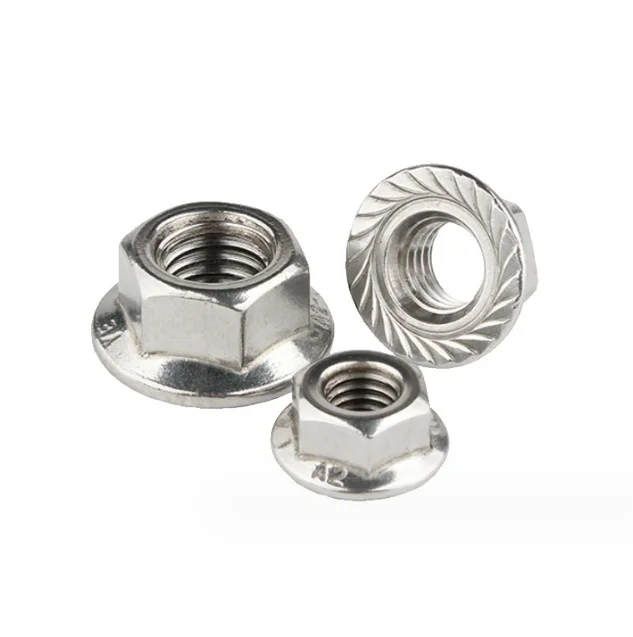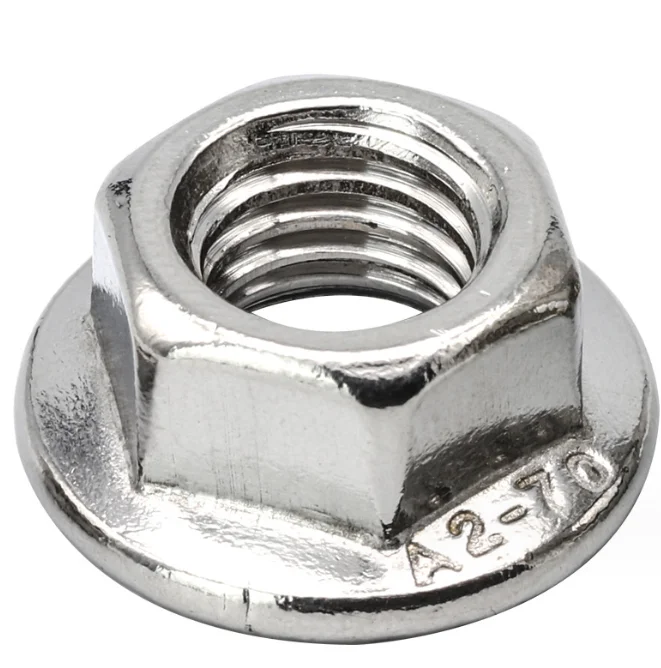Flange nuts are a type of specialty hardware that not only help fasteners to be securely attached, but also allow them to reach its full service life. The feature that distinguishes them from the standard nut is their head, which has a ring or collar - called a flange_CLAMPING ELEMENTS_RUNTIME_These could be screws with an essentially smaller internal size. All of this we cover in today's blog:we will learn more, advantages, types, applications, installation guide & where they are used in different industry during discussion>{!!
Flange nuts have a number of advantages that make them an ideal fastening solution for building and engineering projects. They are excellent at dampening vibrations which is a significant plus. A flange that surrounds the nut works like a lock washer, helping to prevent it from vibrating loose. It is especially relevant for machinery and equipment undergoing frequent vibrations.
Improved corrosion and rust resistance is another feature worth mentioning of flange nuts. This is because they have more surface to the mating surface, meaning that less water or air can become in between the nut and what it connects for. Additionally, they are very well adapted to outdoor or moist environments,Hence flange nuts.

Different variations of flange nuts are available; each providing different benefits depending on the application. Some common types include:
Serrated flange nuts-have serrations on the underside of the flange to help grip against a mating surface to prevent self-loosening.
These nuts, which embed a nylon washer directly inside the flange to provide more hold on parts and prevent them oxidizing or coming loose from vibrations.
Flange nuts without serrations: With a smooth flange for industries where the use of serrated will be dangerous.
These nuts are used in various types of industries like:
Building: Employed in screws bolt connections between nuts and bolts to provide structural strength, bridges and buildings.
Machinery Material Mild steel, used in machines and equipment which vibrate that reduces the chances of nuts loosening thus reducing maintenance costs.
Automotive: Nuts and bolts to secure parts onto wheel assemblies, internal combustion engine components and complete exhaust systems.
By understanding the different features between flange nuts and regular nuts
The main difference between a flange nut and an ordinary one is the presence of a collar on it. This flange provides many benefits including improved corrosion and vibration resistance On top of that, the increased contact area from a flange nut helps clamp down on losing torque due to vibration.
How to Install and Torque Flange Nuts the Correct Way
To the extent that flange nuts are securely installed and torqued, they have their place in a proper application While installing flange nuts you should follow these steps:
Fix the mating surface: Clear the flange nut inserting surface by removing any contaminant or dust.
Hand-tightening the nut: Finally, use your wrist to tighten the nuts until they are seated against each surface snugly-do not resort to power tools just yet.
Torasional load:use a torque wrench to apply the proper ammount necessary on the nut, depending of measurement and type pf fastener
Nuts you full: Use a power tool for the final tightening of the nut (by torque, with an accurate issue torque wrench) to avoid over-tightening (damage is inevitable).

Flange nuts have widespread applicability and are particularly used in many construction as well as engineering applications including -

Bridges: Connecting the bridge deck to the bridge beams.
Buildings: Jointing metal sheets in the roofs and walls of buildings.
Mmchinery (securing a connection in motor vehicles, trains, boats etc with moving parts and that are prone to vibration e.g.engines,pumps compressors)
Securing wheel assemblies, engine components, and exhaust systems in automotive applications.
So, flange nuts would be an essential element in the completion of any construction and engineering project. The flanged design of these wheel locks provides quite a few benefits, among which increased resistance to both vibration and corrosion stands. Installation and torque secure flange nuts, with different types of non-metal options available for all kinds of applications. You will find these nuts being used throughout the construction and engineering sector to reinforce tensile strength in different structures, equipments etc.
QiDian has a diligent rigorous approach to work, a person-centered style of working and make great career objectives. We have a knowledgeable RD team. We invest flange nut of our profits annually as RD expenses to constantly innovate.
We need to perform an optical inspection that is 100% complete after the screws are produced. Then select a certain sample for size and weight testing and a flange nut salt spray test. Ensure product quality.The Quality Assurance Department inspects materials as well as products and creates reports for each stage of the process.
flange nut are able to create custom drawings based on the customer's requirements, for example, the survival conditions, humidity requirements in addition to hardness and torque. choosing the right sizes and materials. You can also connect with our customer support and send them drawings.
Make your production plan in a manner that is reasonable and aligns with the date of delivery specified. Ensure punctual delivery date. We have high-end equipment with flange nut machines being produced simultaneously, plenty of inventory and several production processes to minimize the product delivery time.